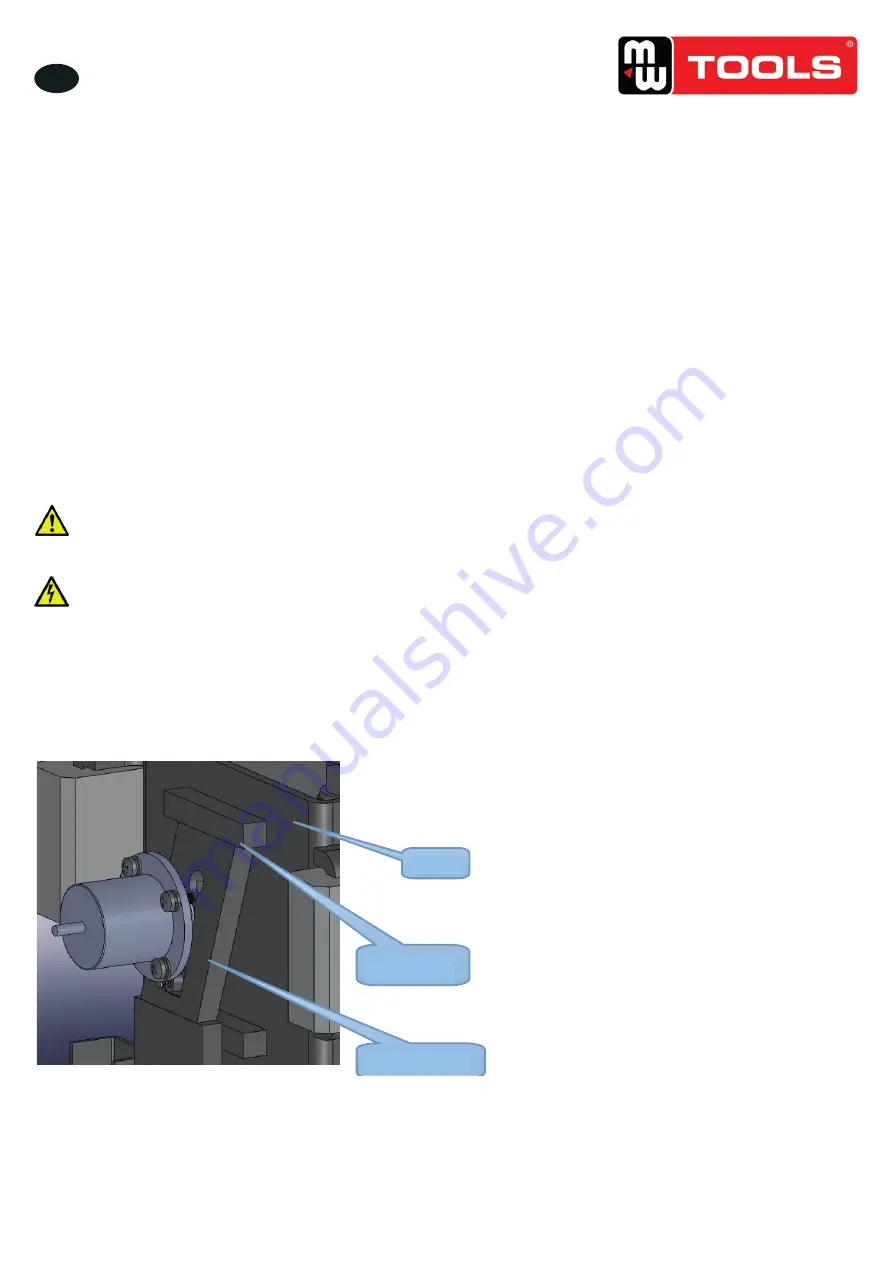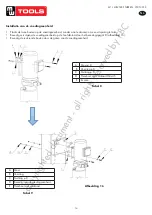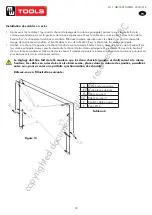
25
FR
M1.1.HB250CF.NLFREN - 05012018
La position du centre de gravité est différente pour chaque véhicule. Déterminez d’abord le centre de gravité du véhicule.
Approchez le centre de gravité du plan formé par les deux colonnes quand vous entrez le véhicule dans le pont élévateur.
Ajustez le bras de levage, placez-le sous le point de levage du véhicule.
4 Consignes de sécurité
4�1 Consignes générales
• Les travailleurs doivent lire attentivement les instructions de ce manuel avant d’utiliser le pont élévateur.
•
Le fabricant décline toute responsabilité en cas de dommages matériels ou corporels dus à une utilisation incorrecte ou non
autorisée du pont élévateur.
• L’utilisateur et l’agent d’entretien doivent respecter les prescriptions légale en matière de sécurité en vigueur dans le pays
d’installation du pont élévateur.
• De plus, l’opérateur et l’agent d’entretien doivent :
- Toujours travailler selon les indications et illustrations de ce manuel,
- Ne jamais enlever, désactiver les protections et dispositifs de sécurité mécaniques, électriques ou autres,
- Lire les notes relatives à la sécurité placées sur la machine et les consignes de sécurité de ce manuel.
Dans ce manuel, les consignes de sécurité sont indiquées par les pictogrammes suivants :
Avertissement :
Indique que les opérations qui suivent peuvent présenter un danger et causer des blessures ou endommager le pont
élévateur, le véhicule ou d’autres biens.
Risque d’électrocution :
Ce pictogramme est placé sur le pont élévateur, aux endroits où le risque de choc électrique est particulièrement élevé.
4�2 Dispositifs de protection
Les dispositifs de sécurité sont là pour protéger l’opérateur en cas de surcharge ou de dysfonctionnement :
• En cas de surcharge, la soupape de décharge de la pompe s’ouvre et l’huile hydraulique retourne dans le réservoir.
•
La sécurité mécanique fonctionne automatiquement pour empêcher le chariot de tomber quand le cylindre d’huile perd de
la pression.
U
U
S
S
E
E
R
R
’
’
S
S
M
M
A
A
N
N
U
U
A
A
L
L
- 9 -
-Operators will hear the sound when the insurance claw falls on the insurance strip in the case of normal use. If
not, this machine is prohibited to use. Operator can check the insurance device by opening the decorated box. If
the insurance device is blocked, adjust the screw on the insurance claw till the sound can be heard when the
insurance claw falls on the insurance strip.
-Only press
“
LOCK
”
button after the machine is lifted, vehicle maintenance can be permitted.
-If the two carriages are not in the same plane, adjust the nut on steel cable to keep them in the same plane.
Tighten the steel cable, or the two carriages can not be synchronous.
-Locking devices are installed in each lifting arm, it can lock automatically when lifting arm rotate to any needed
angle. When the carriage in the lowest position, the lifting arm can rotates freely. In order to prevent the lifting
tray from falling, we adopt the adjustable thread lifting tray to make it more safe and convenient
Risk for extrusion
During up and down operations, personnel leave the said area without following the rule and instruction.
During up and down operations, no person is admitted to work beneath the movable parts of the lift, should work
in the safe zone.
Risk of impact
Before the operator begins up and down movements, make sure that there are no personnel inside the danger
zone. When, due to operational reasons, the lift is stopped at relatively low elevations (lower than 1.75m above
the ground) personnel must be careful to avoid impact with parts of the machine not marked with special colors.
Risk of falling (vehicle)
This hazard may arise in the case of incorrect positioning of the vehicle on the lifting arms, overweight of the
vehicle, or in the case of vehicles of dimensions that are not compatible with the capacity of the lift.
When the lifting arm is being tested, the vehicle engine can not be turned on.
There is nothing should be placed on the lift-lowering area and the movable parts of the lift.
Risk of slipping
The floor caused by lubricant contamination of around the lift. The area beneath and immediately surrounding
the lift and also the platforms must be kept clean. Remove any oil spills immediately.(
Picture 14
)
Risk of electric shock
Risk of electric shock in areas of insulated and shattered electric equipments
Do not use jets of water, steam solvents or paint next to the lift, and take special care to keep such substances
colum
n
Insurance
claw
Insurance strip
Picture 4
Figure 3
Sécurité
Barre de sécurité
Colonne
copyrighted
document
- all
rights
reserved
by
FBC
















































